Kadeem's Vern Profile
2040
Bugs
chips
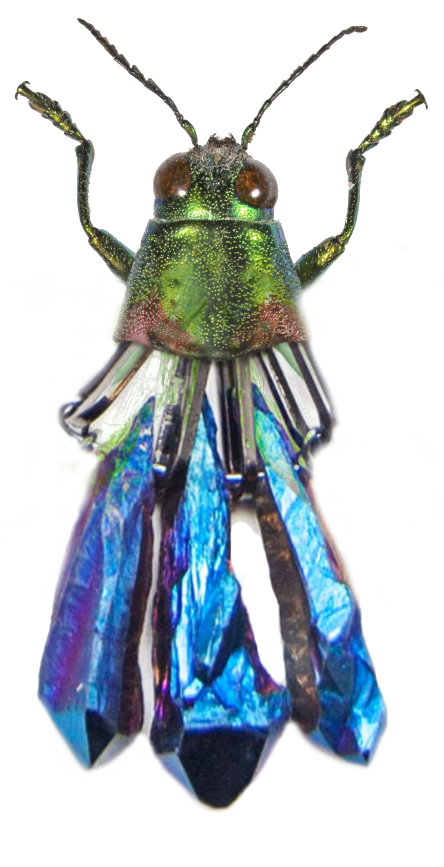






“You’re a good yute, Kadeem” — words he’s heard often over his seventeen years. Kadeem is growing up and getting wise in Malvern, an up-and-coming neighborhood in the east-end Scarborough area of Toronto. The child of third generation Tamil and Rwandan refugees, he has a keen sense of the opportunity he’s afforded living on the “good side” of the hood. Kadeem is quiet, a dedicated learner, and as a student, endlessly curious. He’s shy, but brave with a strong sense of justice. He’s an avid gamer and game designer, and aspires to design his own BPUs, BioProcessing Units, a kind of integrative computer chip he believes will be the future of the virtual game industry.

Behind his reserved demeanour is an essence of cool dignity that people feel — like Kadeem could navigate any situation. Though he’s the youngest amongst them, Kadeem’s friends ask his counsel on everything from relationship advice to their plans to scam a quick coin.


This is Vern Block. It’s 2040 and there’s an uneasy peace here. Where the media once portrayed Malvern as a centre of gang-related gun violence and organized crime — things have chilled considerably. In the years following the ‘defund’ movement, police budgets were slowly redirected to mental health services, community therapy programs, and STEM education in priority neighbourhoods. The Perpetration-Risk External Evaluation (PREE) system, a so-called community watch program, took over the physical police presence in communities. Beneath the veneer of calm suburban safety and incoming gentrification, there remains an unsettling vibe in Malvern. Kadeem feels it — the residual energy of unresolved vendettas, the somatic heft of trauma carried over generations, and the persistent weight of surveillance.
Many old colonial monuments have been replaced with statues of Malvern’s community heroes. Kadeem has the feeling these are still lowkey authoritarian tools, part of the whole pacifying vibe. Are they more than symbolic gestures? It always feels like the statues are watching. And listening. Even controlling things and suppressing any dissent chat.
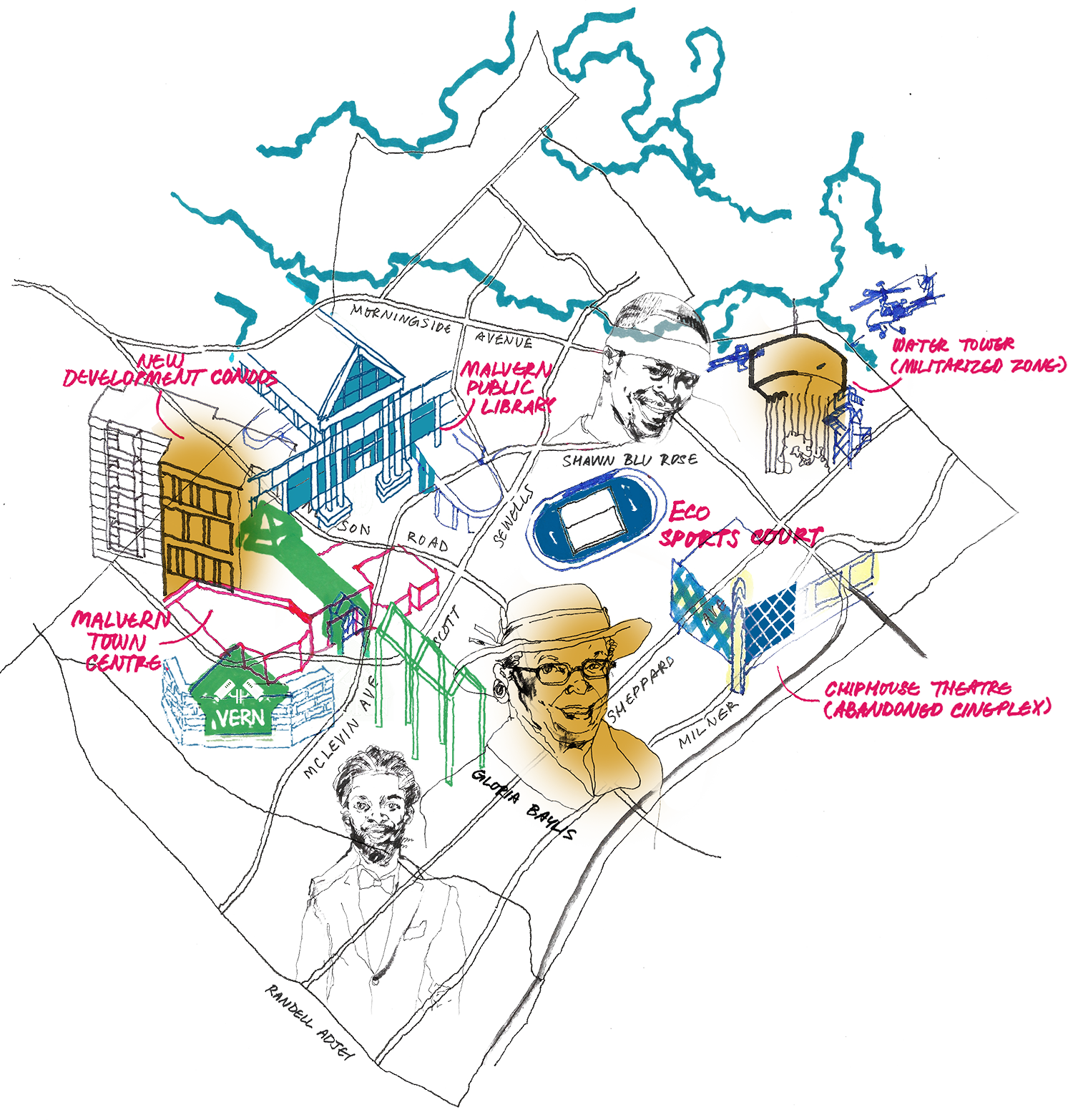



When Kadeem starts asking questions that threaten to shatter his reality, an eccentric mentor points him to a trove of illegal counter-surveillance protocols and encrypted communications networks. Kadeem is about to see what’s what — that Malvern’s social wellness programs may equate to little more than a ubiquitous surveillance system that turns the community on itself. Confronted with these revelations, along with legacies of community violence and the allure of underground economies, Kadeem must make some choices about what he’s willing to fight for.




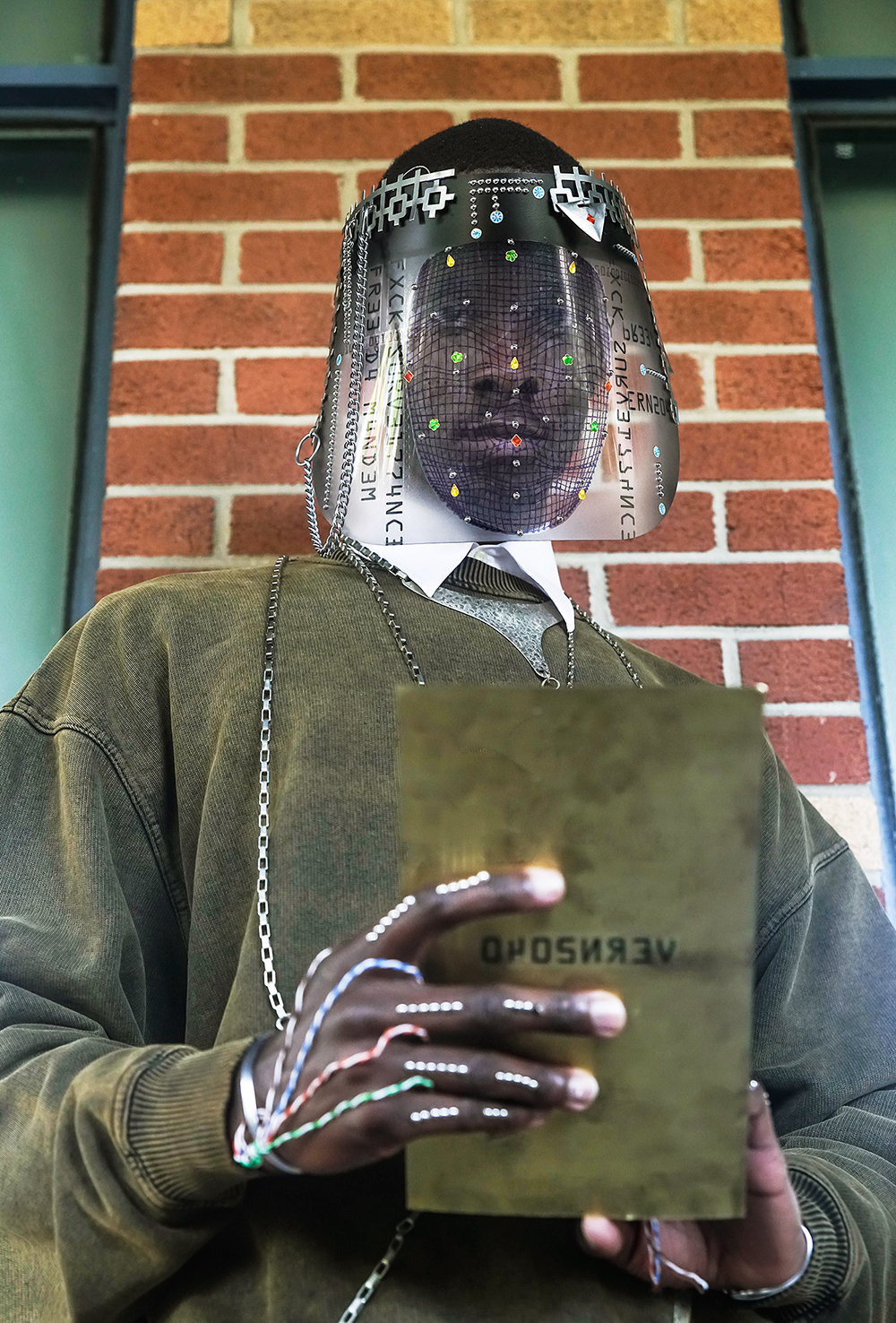
Among the resistance to integrated surveillance, illicit protocols for making makeshift wearables are shared on the underground cyber channels. An emphasis on STEM education in public education has resulted in a low-value labour force with engineering code literacy as a common skill among young people. Though the STEM skills never delivered on the job market value they promised, they enabled kids like Kadeem to develop their own encrypted systems and devices from recycled e-waste. Young people are often found wearing a “skeemask” as a method of evading facial recognition detection by PREE.

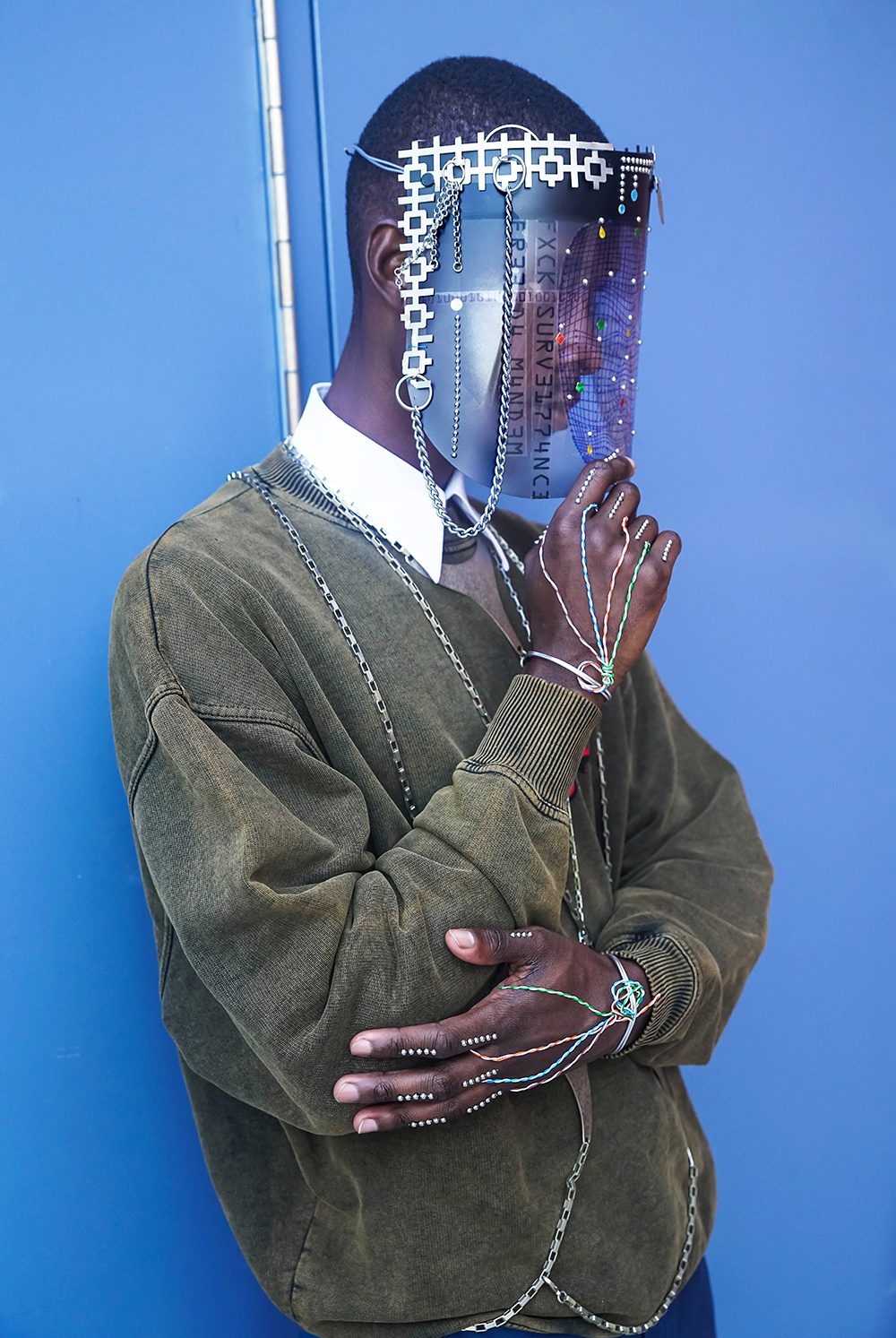
An exoskeleton device and fashion statement that can be used as a weapon or a shield. The main purpose of Gloves is to distort or falsify fingerprints. A variety of add-ons can be purchased on the grey web to enhance the power of the hand — providing superhuman strength or the ability to covertly administer microscopic doses of radioactive toxicity. The invention of Gloves presents a real problem for the criminal justice system. Their encryption can often lead to false accusations. Enhanced Gloves are illegal, but their prohibition is hard to enforce as users can easily evade identification.
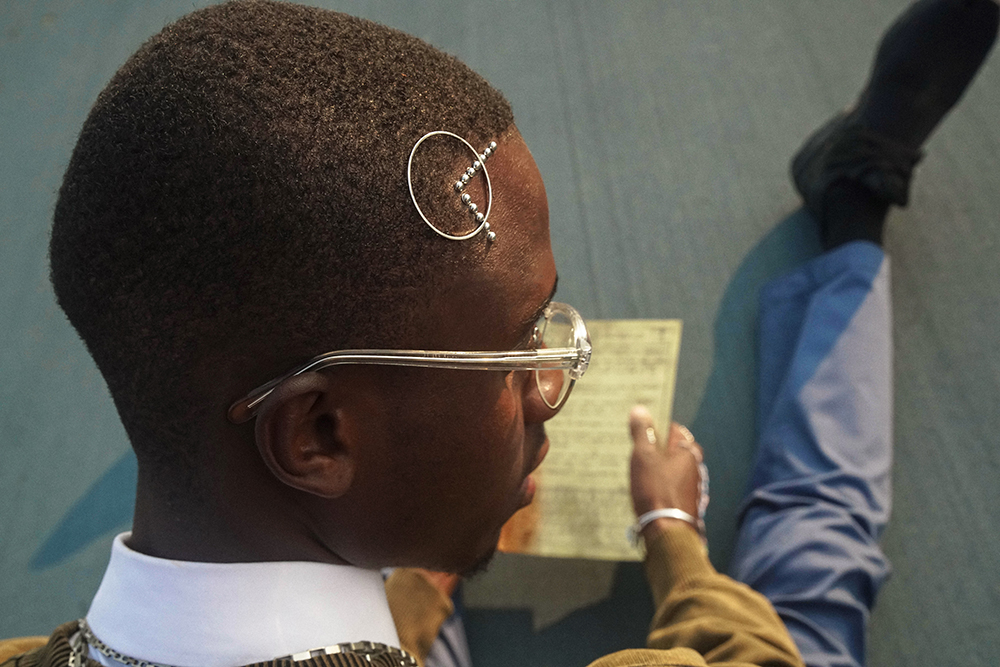
Kadeem has hacked his neuropatch, so he’s able to access his own neural data and manage his own chemicals levels, all while sending false information on his neural activity data to PREE, so everything looks normal in the system.
Most everyone in Vern wears a BPU (Bio-Processing Unit) neuropatch. Part of the Root Engineering Algorithm (REAL) therapy program, the patch is supposed to monitor and balance neurochemical levels. It’s technically optional, but there’s intense social pressure to wear it; it’s seen as a social good, like showing up to church every Sunday. Most opt in. Vern has some traumatic histories, and REAL therapy has brought a lot of peace, building intergenerational bridges and community kinship.
BPU chip technology originated in gaming where it’s used to create intensely real, dream-like, entertainment experiences. It’s literally a controlled hallucination. When abused, BPUs can have dangerous mind-altering effects. Known on the street as chips, some BPUs are effectively a highly-addictive digital drug.
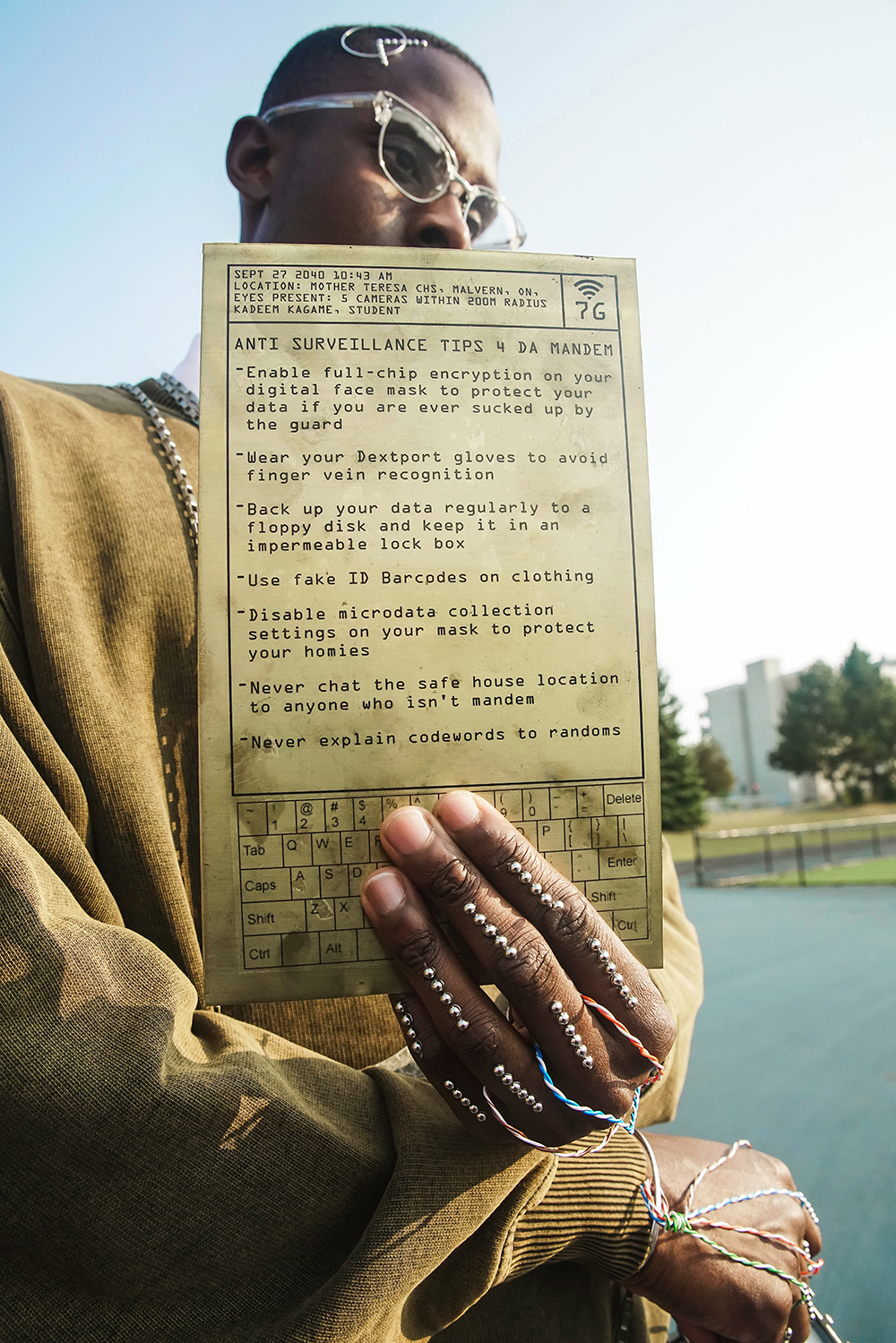
Kadeem uses his Brass Tablet, a locally crafted lo-tech interface, to access VernMesh. The encrypted local network is separate from the mainstream metaverse. Brass tablet access to VernMesh creates a safe system for anti-PREE activists, and will be a critical tool of the resistance.
